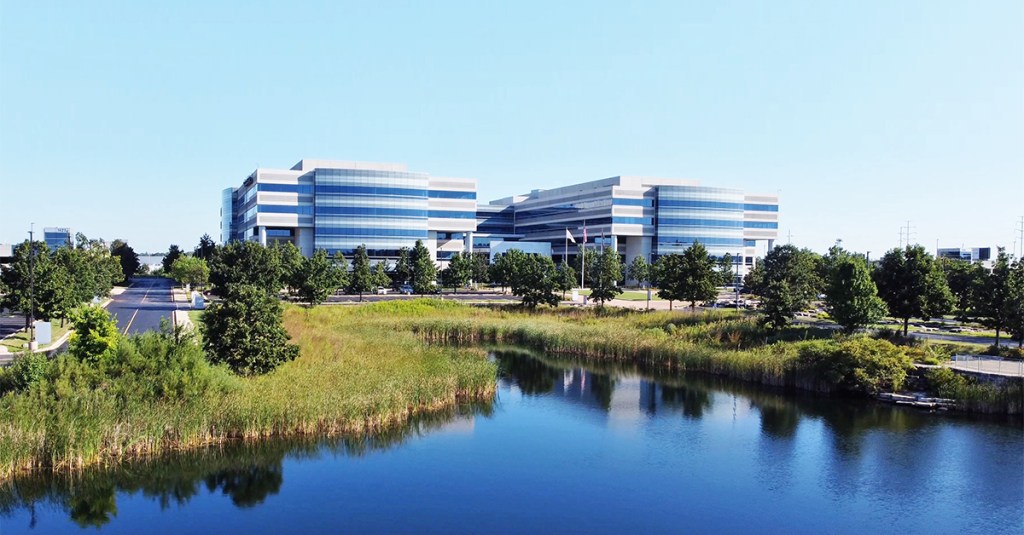What’s Driving Corporate Office Moves
This crucial group of office tenants is focusing on three key issues.

The office market continues to take new turns, and corporate occupants are doing a lot to drive the changes. It wasn’t long ago that some key trends would have surprised most stakeholders.
For starters, absorption is heading in the right direction. Even though new supply outpaced demand during the second quarter, the market scored its fifth-consecutive quarter of positive net absorption. Leasing ticked up slightly, with spaces between 10,000 and 20,000 square feet accounting for more than half of all activity. According to CBRE’s 2025 Americas Office Occupier Sentiment Survey, 77 percent of respondents now expect employees to spend at least three days a week in the office.
Against this mix of tough conditions and encouraging signs, the key corporate user category is showing distinct preferences. These patterns are showing up as three major trends that owners and managers should keep top of mind.
Chasing quality
Corporate tenants are increasingly moving to newer, amenity-rich Class A properties. The primary driver of this trend: attracting and retaining employees, who want a pleasant workplace, with flexible spaces that allow them to work both individually and collaboratively.
Corporate relocations to new markets make headlines, but moves to a new property within a corporate tenant’s longtime home reveal just as much about tenants’ intentions. In one of the largest such decisions this year, Siemens Energy revealed plans this summer to leave its U.S. headquarters in Orlando’s Alafaya Trail submarket, where the company has been for more than 40 years.
In 2027, the company will move to Lake Nona, Tavistock’s 17-square-mile master-planned development in Orlando. For its new home, Siemens Energy selected 242,000 square feet at 6876 Marwick Lane, which is located within Lake Nona Town Center, a 100-acre destination that features retail, entertainment and dining.
Companies want to go to a building that feels full of life.
—Jim Adler, Executive Vice President, NAI Hiffman
The move exemplifies the new generation of office-use strategies favored by corporate office tenants, including flexible layouts in work areas, improved spaces for meetings and collaboration, and upgraded technology and amenities. Flexibility is a particularly high priority, as Siemens continues the hybrid work structure it’s implemented in recent years.
In a competitive corporate office market, tenants will also gravitate toward historic properties that offer modern upgrades. Mitsui Fudosan America invested $25 million to renovate The Homer Building, a century-old property in downtown Washington, D.C.
Improvements to the 460,000-square-foot property included a state-of-the-art fitness center, complete with a pickleball court, as well as a glass-enclosed, two-story conference center and a rooftop terrace that offers views of the Capitol and surrounding monuments. Another built-in advantage for prospective tenants is that the building is located above Metro Center Station, a transit hub.
Attracted by upgraded amenities, JLL leased 28,000 square feet to international law firm Clark Hill, which is scheduled for an early 2026 move-in. That lease followed a June 2024 commitment by The BGR Group, a public affairs consultant, to take 40,000 square feet at the property. The firm similarly cited the planned renovations and the distinctive design of the building, which was completed in 1913 and previously renovated in 1990.
A more contemporary example of a property that’s capitalizing on corporate tenants’ flight to quality is Hub 1415, a 721,936-square-foot, Class A office campus in Naperville, Ill. The property has scored two significant corporate signings this year. In July, Ocean Network Express, a shipping company, took 40,000 square feet at the suburban property. That followed Liberty Mutual’s 20,000-square-foot lease in March.
Located on an expansive campus, the property consists of two five-story towers connected by a central skyway, with a common atrium. The building’s owner, RMR Group, invested in amenities and other improvements to enhance the property’s appeal to office workers.
“(RMR Group) created a huge soft-seating tenant lounge in the lobby, with soaring ceilings, artwork and access to a coffee shop,” recounted Jim Adler, an executive vice president at NAI Hiffman. “We’ve had a lot of success leasing that building. Companies want to go to a building that feels full of life.”

CBD or suburbs? Both, please
Corporate tenants looking to reduce rent outlays and improve NOI might have good reason to prefer the suburbs, but that’s not necessarily the case.
“We haven’t seen any urban exodus to the suburbs for any reason,” said Adler. “Companies based in the suburbs tend to like being there because their workforce is there and the rent is probably less than downtown. But the CBD offers different attributes than the suburbs, and here in Chicago, one is not outperforming the other.”
Corporate tenants that do opt for CBDs tend to share a single priority. “Talent is the No. 1 driver of location decisions among tenants, regardless of what market you’re in,” observed Katy Redmond, senior managing director for leasing advisory at JLL. Over the past 18 months, the talent hunt has prompted a half-dozen substantial JLL clients to migrate from the suburbs to downtown Boston, where prospective employees are most likely to live, she noted. The urban setting offers a worker-friendly combination of new buildings and walkability.
Do you have space where people feel it’s worth going in—that it will be more productive and a better experience in the office than working from home?
—Whitley Collins, Global President, Occupier Leasing, Advisory Services, CBRE
Another trend to watch is office tenants’ growing preference for lifestyle office markets, also known as live-work-play districts. Often located in the suburbs, these are typically walkable, mixed-use locations. Although lifestyle office markets currently comprise just 4 percent of U.S. office space, JLL projects that these properties will account for 30 percent of the national inventory by 2040, as both workers and businesses favor locations offering convenience, community and experiences beyond just the workplace.
According to a recent JLL report, this niche is dramatically outperforming the rest of the U.S. The category commands a 32 percent rent premium over other Class A office space and its assets lease up twice as fast, JLL reported.

The Goldilocks principle
Many corporate tenants are still trying to figure out their long-term return-to-office policy, and that’s affecting their leasing decisions. “There are a lot of companies that are afraid of mandates, but they want people back in, so those companies are taking better space, and really paying attention to where that space is located,” noted Whitley Collins, global president of occupier leasing, advisory services at CBRE.
He poses a fundamental question for owners and managers serving corporate occupiers: “Do you have space where people feel it’s worth going in—that it will be more productive and a better experience in the office than working from home?”
Another factor that corporate office decisionmakers consider is the hard-to-define X factor called “buzz.” This is generated by a vibrant workplace—not a space with desks that are vacant because employees are working from home.
Talent is the No. 1 driver of location decisions among tenants, regardless of what market you’re in.
—Katy Redmond, Senior Managing Director, Leasing Advisory, JLL
“It’s bad for the energy of the office if someone has dedicated office space, and no one is there,” said Collins. “If you give people dedicated space and then allow them not to come in, that creates an environment that no one wants to be in.”
In its occupier sentiment survey, CBRE found that more than half of organizations report a lack of vibrancy in the office as a central challenge. That’s why it’s advisable to take a Goldilocks approach and not take too much space, or too little, but just the right amount. That enables the staff to work effectively without the empty desks that create a negative environment.
Owners, managers and advisers can also remind their clients to make sure they understand how their employees are using the space by tracking badge data and login trends.
“Every occupier—whether you’re a 5,000-square-foot startup or a big corporation—is going to have a higher yield on their real estate investment, better control over real estate costs and be able to better forecast how they need to spend on workplace design,” observed Redmond. “If you’re not tracking that utilization today, and if you’re not using that data to inform your real estate decisions, you’re just guessing.”







You must be logged in to post a comment.